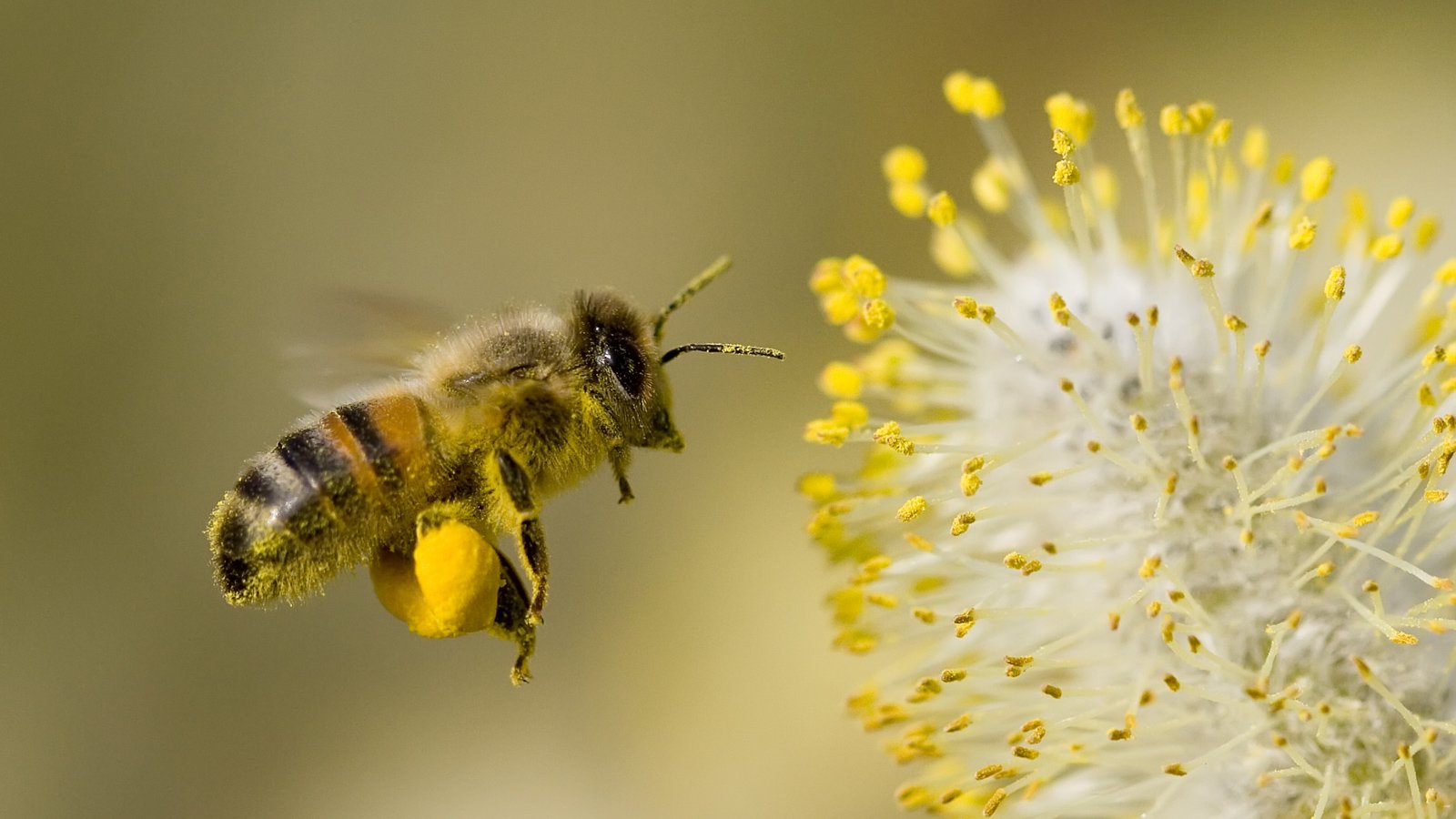Thanks to its role in pollinating flowers, the bee is an indispensable insect for growth and flowering. As a crucial link in the ecosystem, the bee symbolizes intelligence and connection. Milgro feels connected to these little animals because, like the bee, we are concerned with restoring natural capital. This is why Milgro supports initiatives to improve the living conditions of the endangered bee.
Pollination is essential to our food production. Without pollination, there is no fertilization. This has a major impact on what we eat and on biodiversity. In this blog, we talk more about the process of pollination.
What is pollination?
Flowers have pistils and an anthers. The pistils contain one or two ova. The anthers produce male gametes: the pollen grains. When fertilization occurs, a fruit can develop. For this, pollination is required.
Pollination involves a transfer of pollen grains to the pistil of the flower. A pollinated flower does not necessarily bear fruit, but pollination makes the chance of fertilization possible.
Some flowers pollinate themselves with their own pollen grains, through self-pollination. Other plants involve cross-pollination: this involves pollen grains from other flowers of the same species landing on their pistil.
Types of pollination
There are several types of pollination possible in nature. For example, entomogamy occurs when flying insects, such as bees and bumblebees, carry pollen grains. The insects search for nectar and fly from flower to flower to do so, leaving the pollen grains attached to their legs or abdomens.
Other animals can also pollinate flowers, such as birds, bats and snails. Pollination by wind is called anemogamy and often occurs in grasses and trees. Finally, water can also move pollen grains and transport them to other flowers. This is called hydrogamy.

What are common pollinators?
Anyone who thinks of pollination will quickly think of the bee. Not surprisingly, because flying insects such as bees and bumblebees are the most common pollinators of flowers. Yet many more insects contribute to this process, such as beetles, butterflies, hoverflies and bugs.
Some species of bees are more effective at pollinating flowers than others. For example, the honey bee primarily transports pollen through its legs, releasing grains onto the next flower. Bumblebees take many grains with them through their woolly coats, making them very effective pollinators.
No two insects are alike, so different species of bees and bumblebees all have their own characteristics. A large number of different insect species therefore increases the chances of pollination and thus fertilization of flowers.
Stay informed
Milgro regularly publishes articles and blogs on issues close to our hearts, such as the bee. You will also read regular updates on the circular economy, natural capital and sustainable waste and resource management. Want to stay informed? Follow us on LinkedIn.









